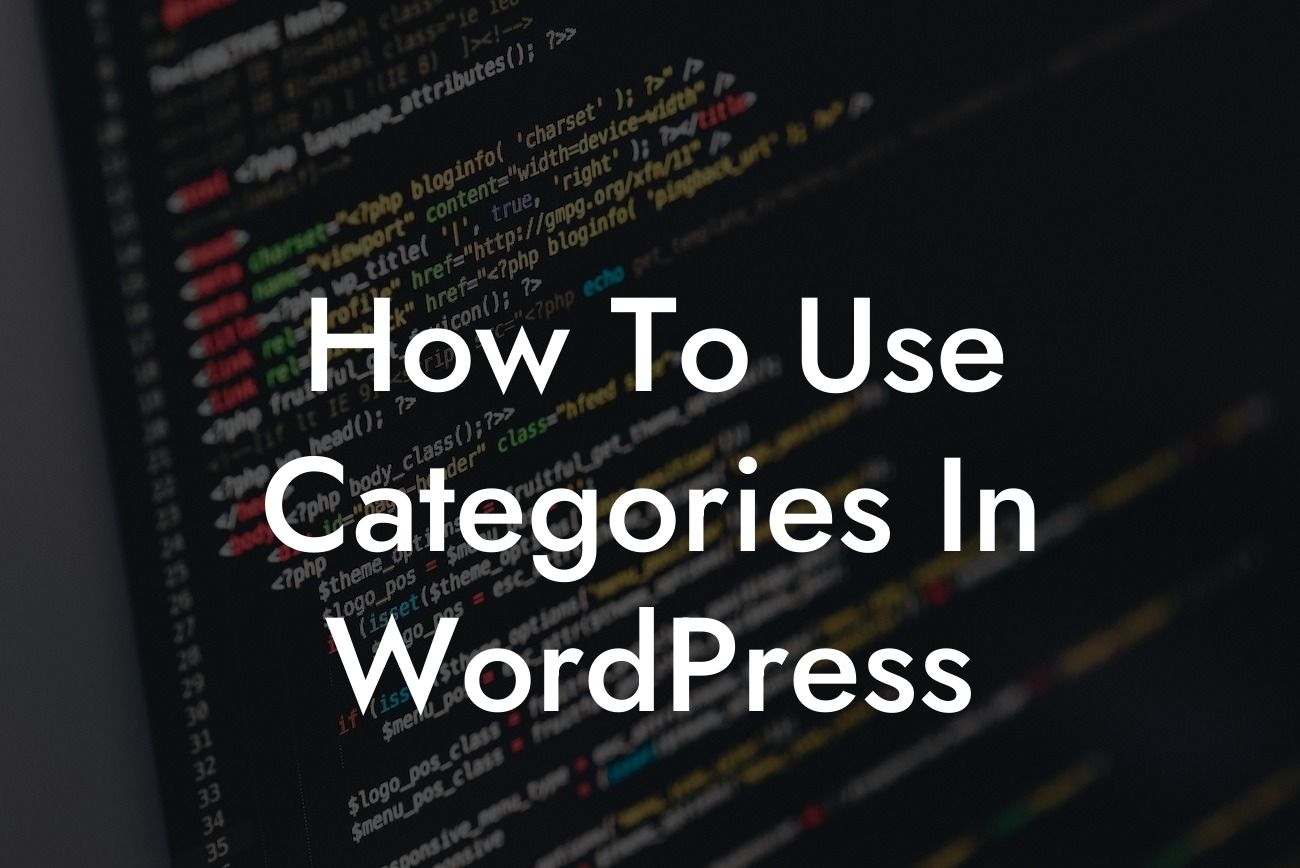Categories in WordPress play a vital role in organizing your content and improving your website's user experience. Whether you're running a blog, a portfolio website, or an online store, utilizing categories effectively is crucial for easy navigation and enhanced discoverability. In this comprehensive guide, we will take you through the ins and outs of using categories in WordPress and provide practical tips to optimize your website's structure.
Understand the Importance of Categories:
To start, let's explore why categories matter in WordPress. Categories serve as a way to group similar content together, allowing visitors to find relevant information quickly. By organizing your content into distinct categories, you not only make it easier for your audience to navigate through your website but also make it more appealing to search engines, potentially improving your site's SEO ranking.
Creating and Managing Categories:
Now that we understand the significance of categories, let's dive into the process of creating and managing them in WordPress. To begin, navigate to your WordPress dashboard and select the "Posts" or "Pages" section, depending on where you want to add categories. From there, click on "Categories" and create new ones by entering a name, slug, and optional description. You can also create sub-categories to further streamline your content organization.
Looking For a Custom QuickBook Integration?
Assigning Categories to Content:
Once you have created your categories, it's time to assign them to your posts or pages. When creating or editing a post/page, you will find a section dedicated to categories. Simply check the relevant box(es) to assign the content to specific categories. Remember to choose the most relevant category for each piece of content to ensure a consistent and user-friendly structure.
Optimizing Categories for SEO:
Categories can significantly impact your website's SEO performance, so it's essential to optimize them for maximum visibility. Firstly, focus on creating descriptive and relevant category names that reflect the content within. Additionally, ensure that each category has a unique slug and
Using Categories for Navigation and Filtering:
One of the main benefits of using categories is providing easy navigation for your users. By incorporating category menus or dropdowns, visitors can effortlessly browse through specific topics of interest, enhancing their user experience. Furthermore, utilizing categories for filtering can create personalized browsing experiences, allowing users to refine their search and find precisely what they're looking for.
How To Use Categories In Wordpress Example:
Imagine you're running a recipe blog with various types of recipes, such as desserts, mains, and vegetarian dishes. By creating separate categories for each, you enable your readers to precisely find the recipes they desire. Furthermore, you can incorporate a dropdown menu with these categories, making it convenient for users to explore recipes based on their preferences and dietary needs.
Now that you have mastered the art of using categories in WordPress, take your website to new heights with DamnWoo's fantastic WordPress plugins designed exclusively for small businesses and entrepreneurs. Whether you're looking for advanced category customization, enhanced navigation features, or SEO optimization tools, our plugins have got you covered. Don't forget to share this article with others who could benefit from mastering WordPress categories and explore our other informative guides on DamnWoo.
[CTA: Try DamnWoo's WordPress plugins and elevate your website today!]













